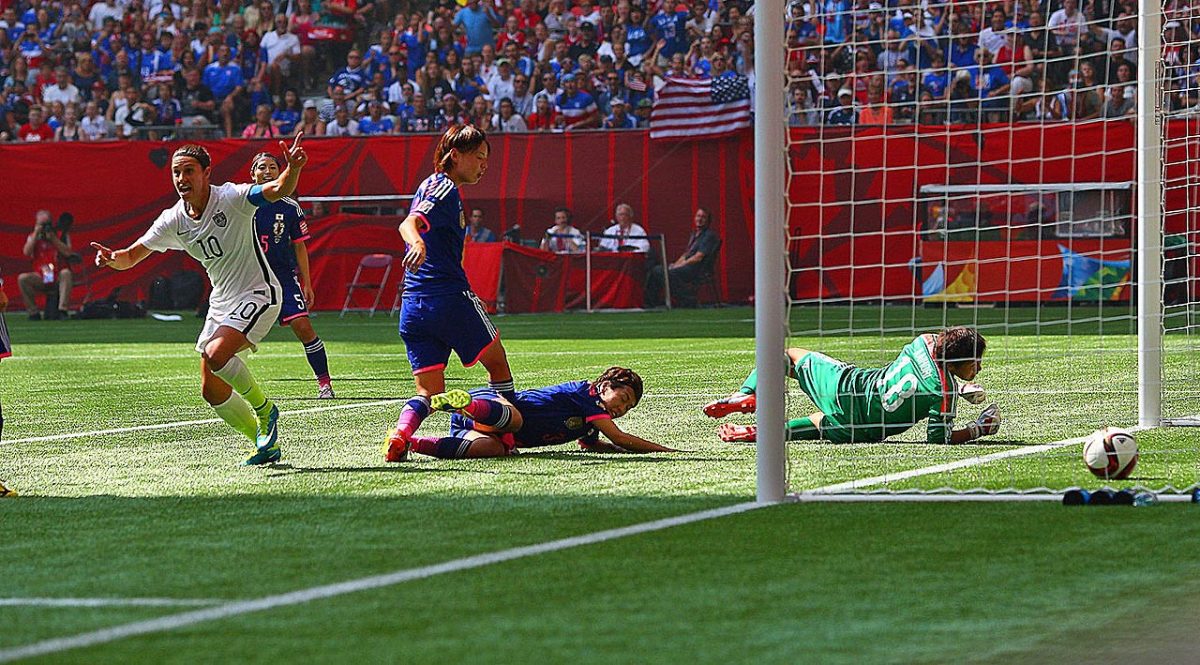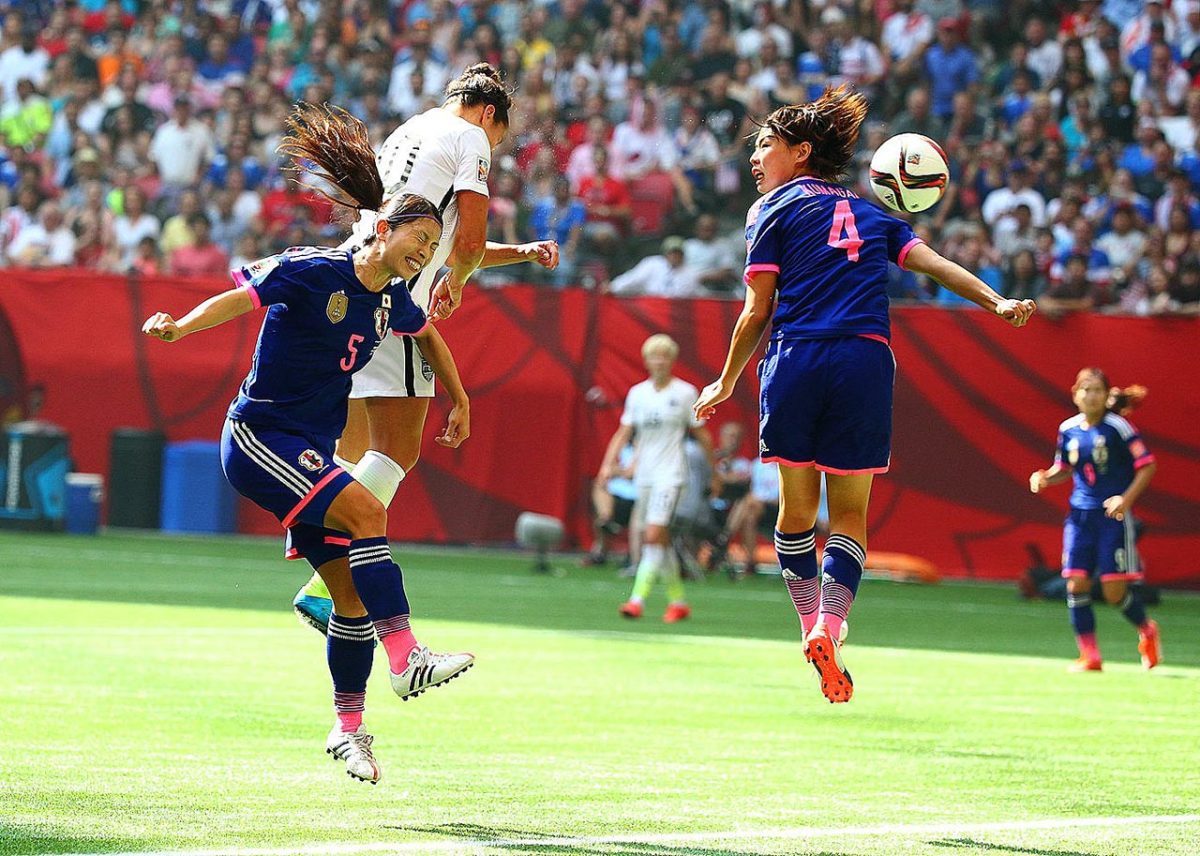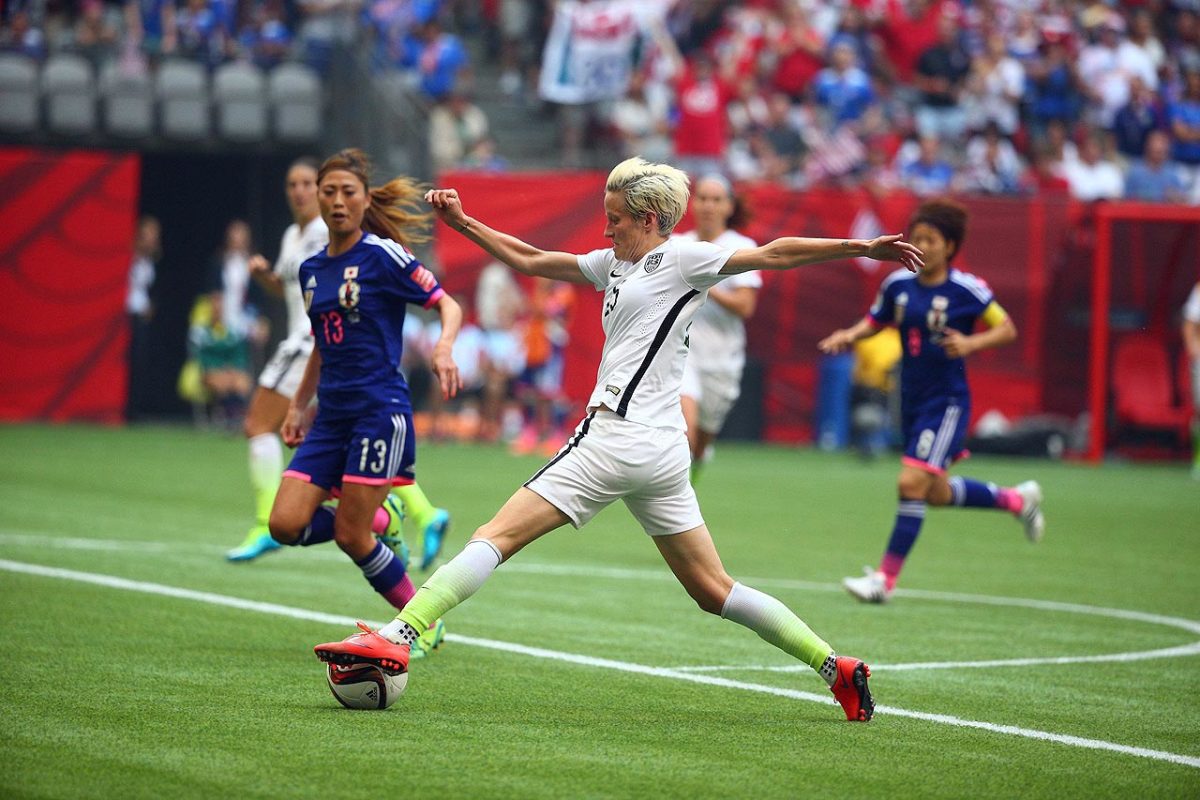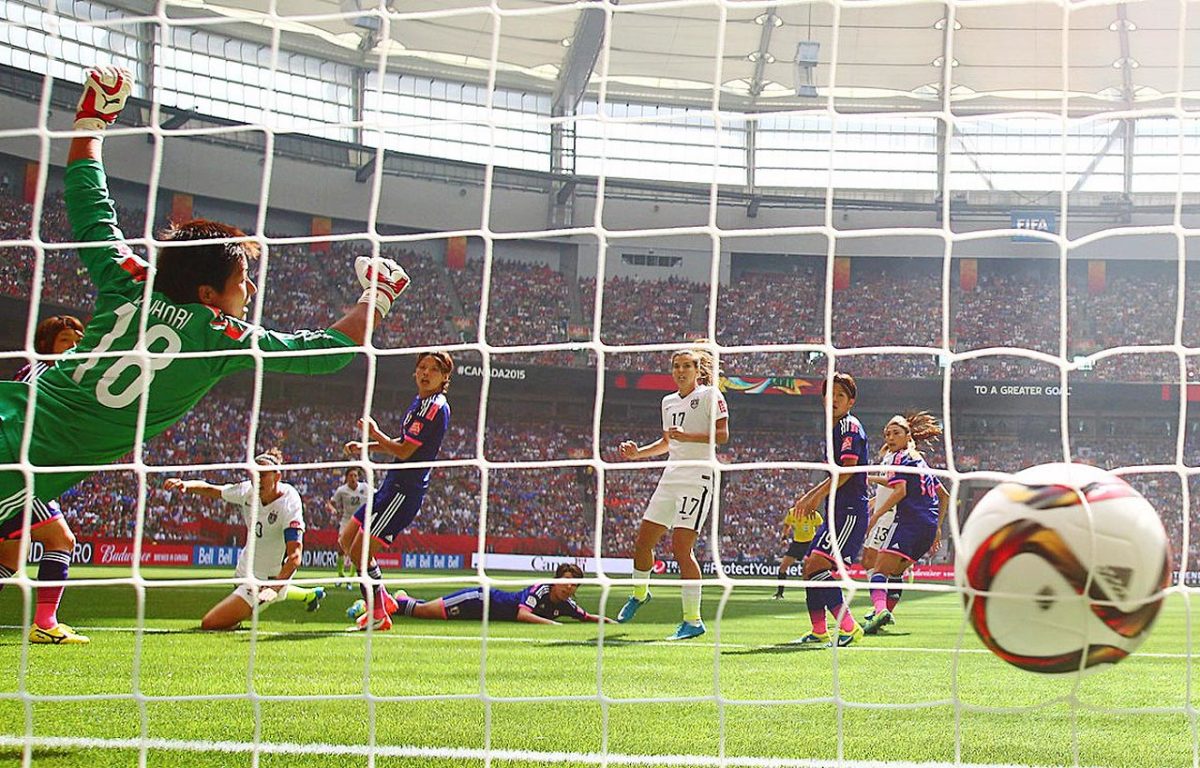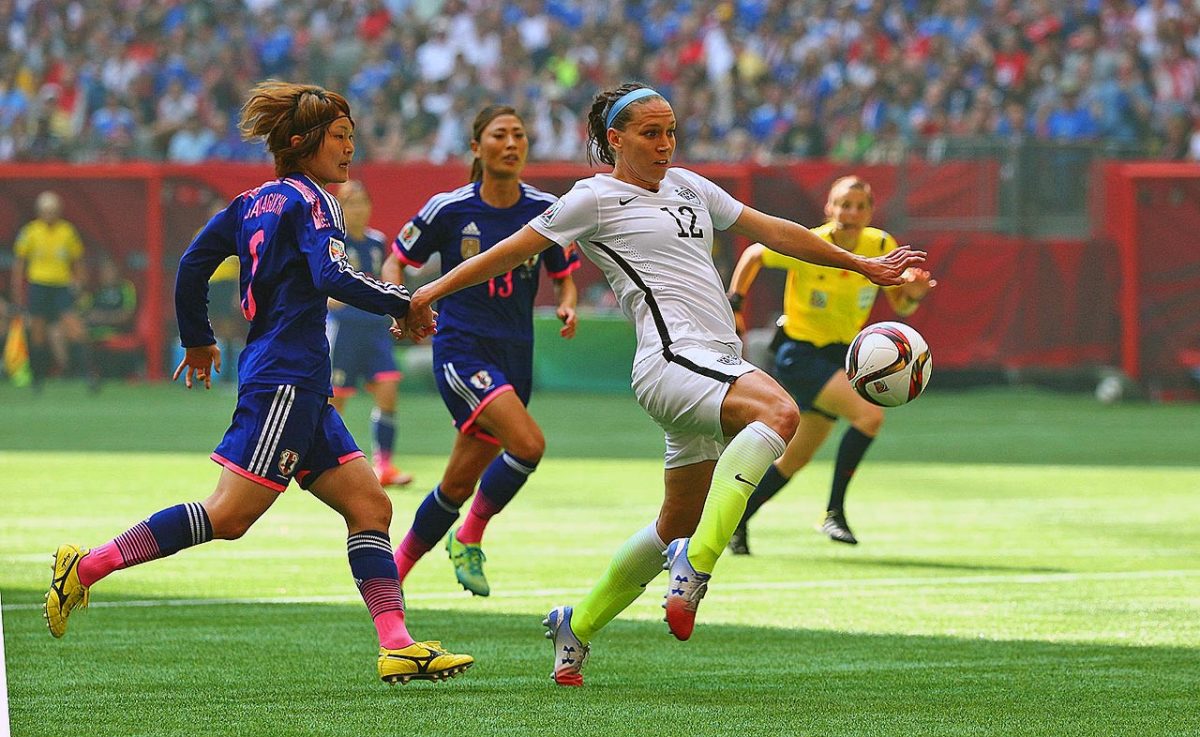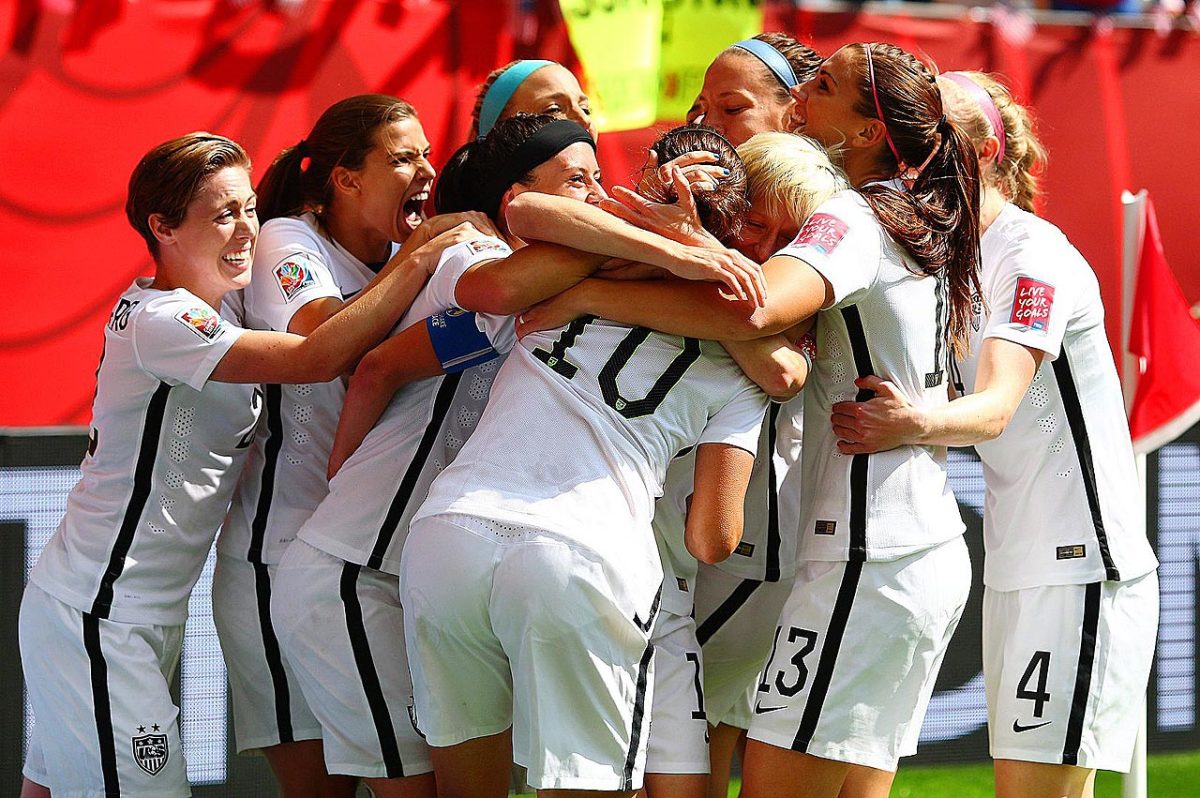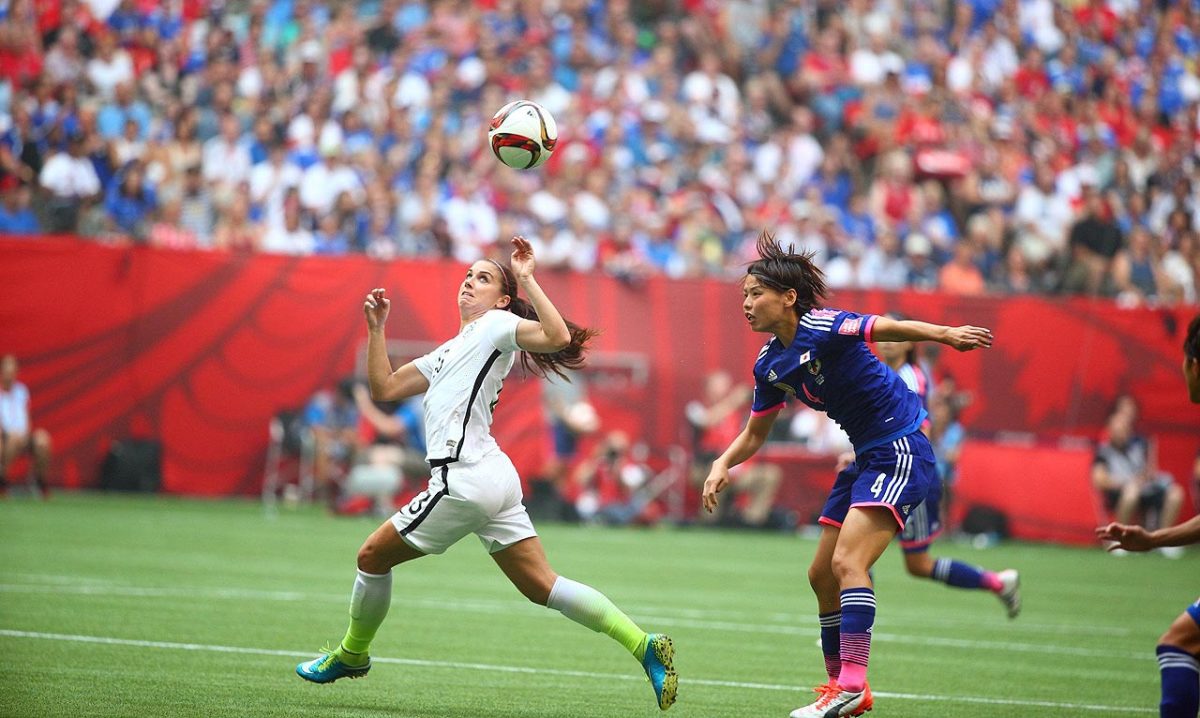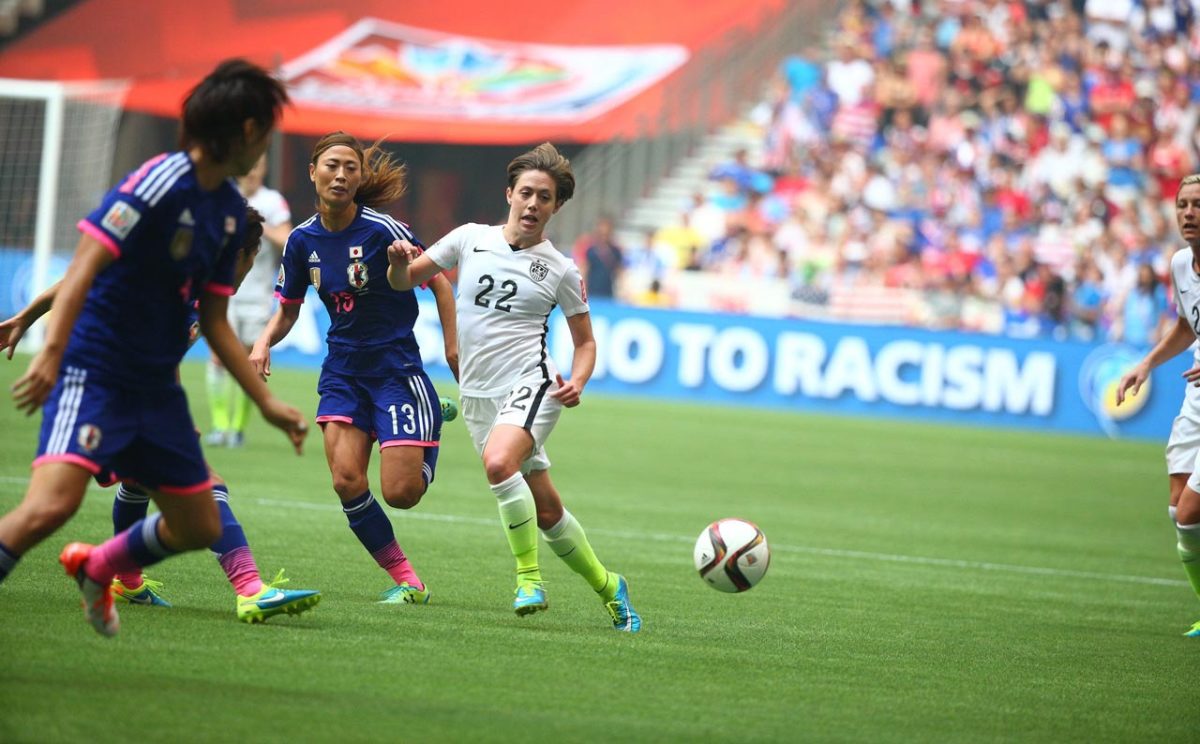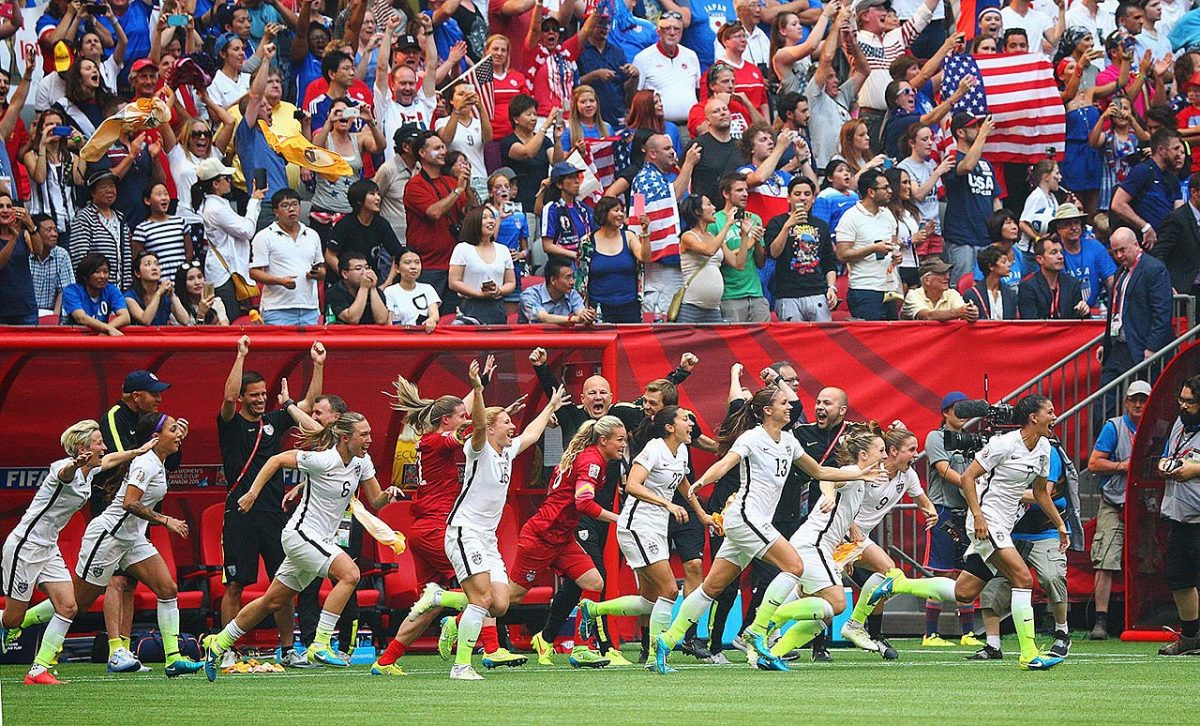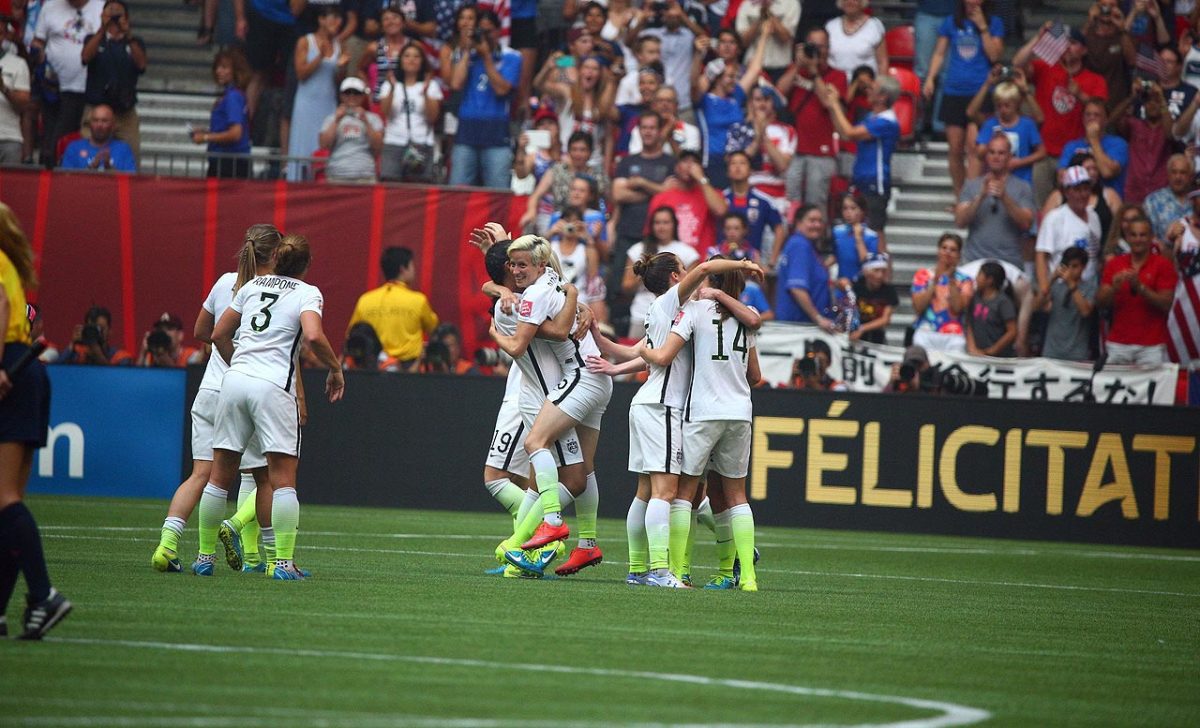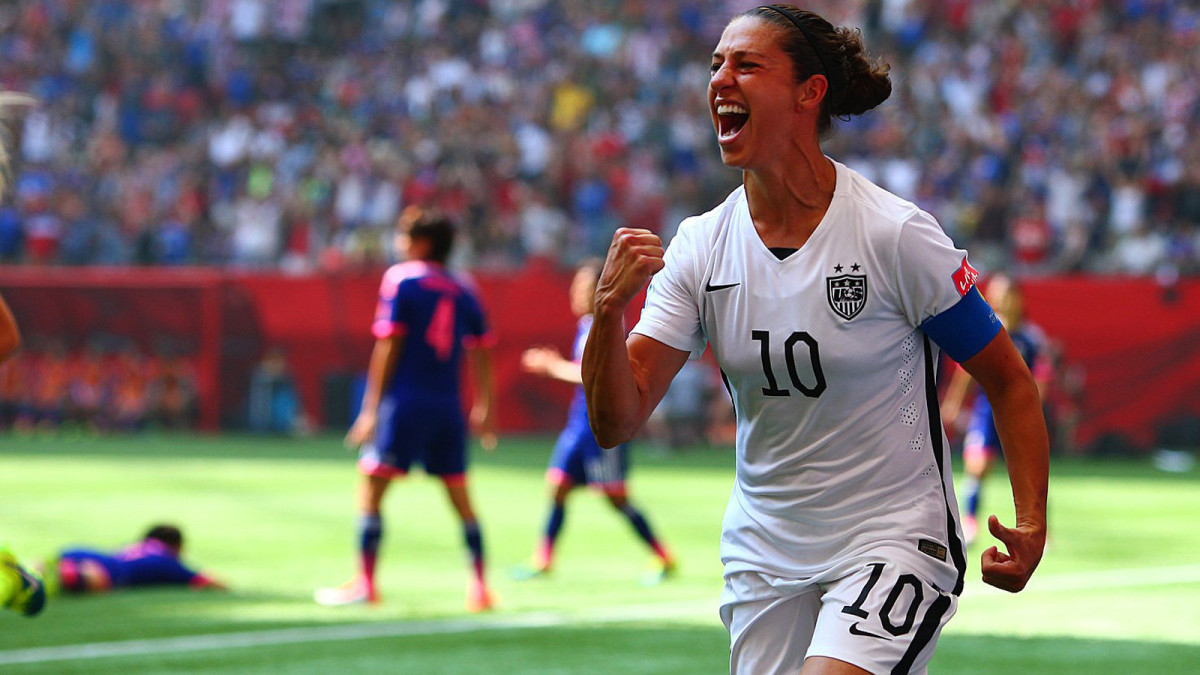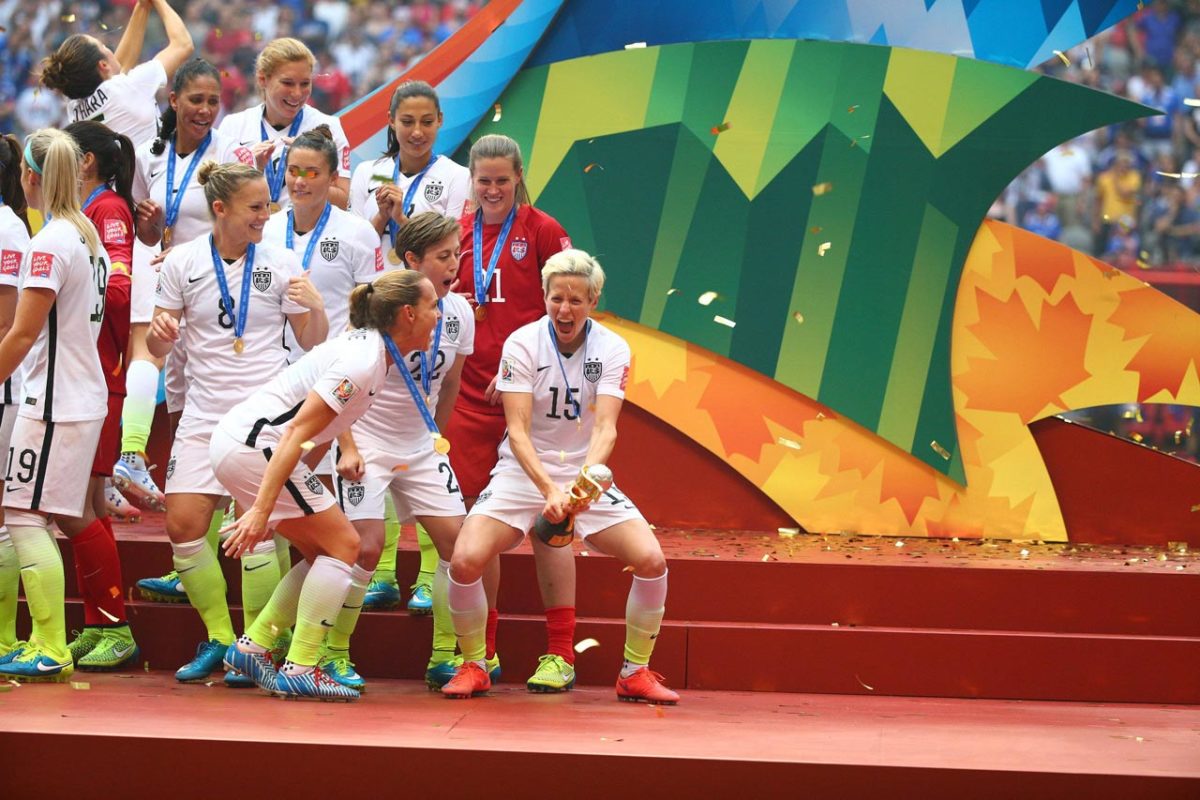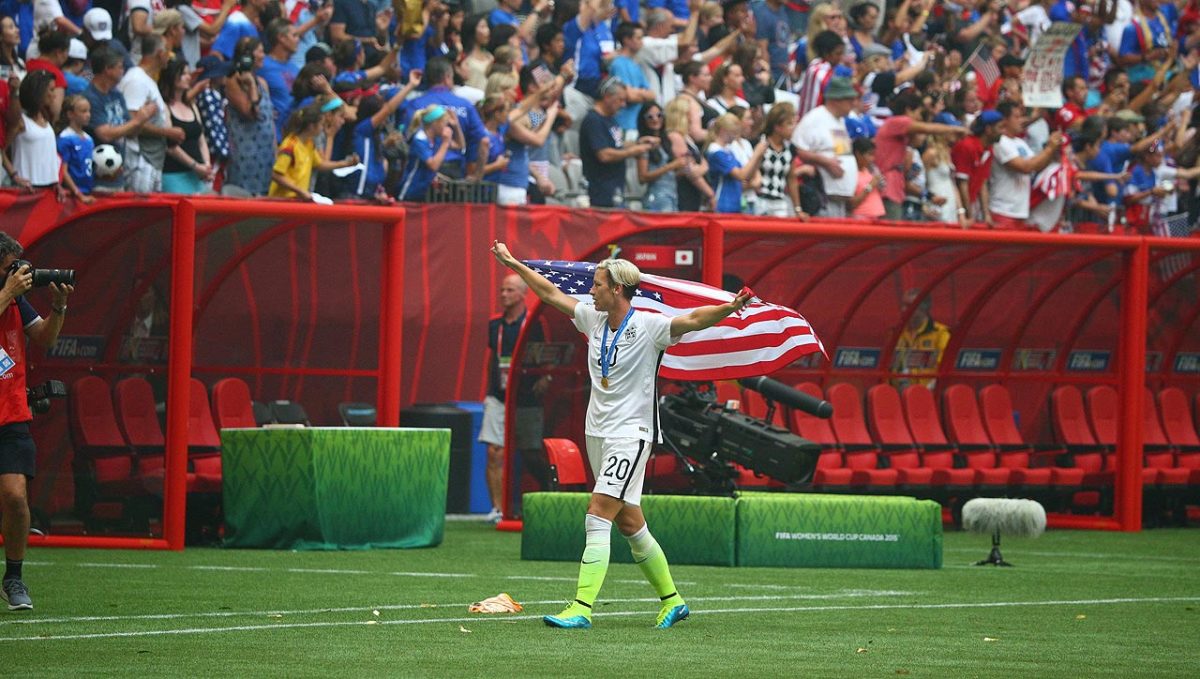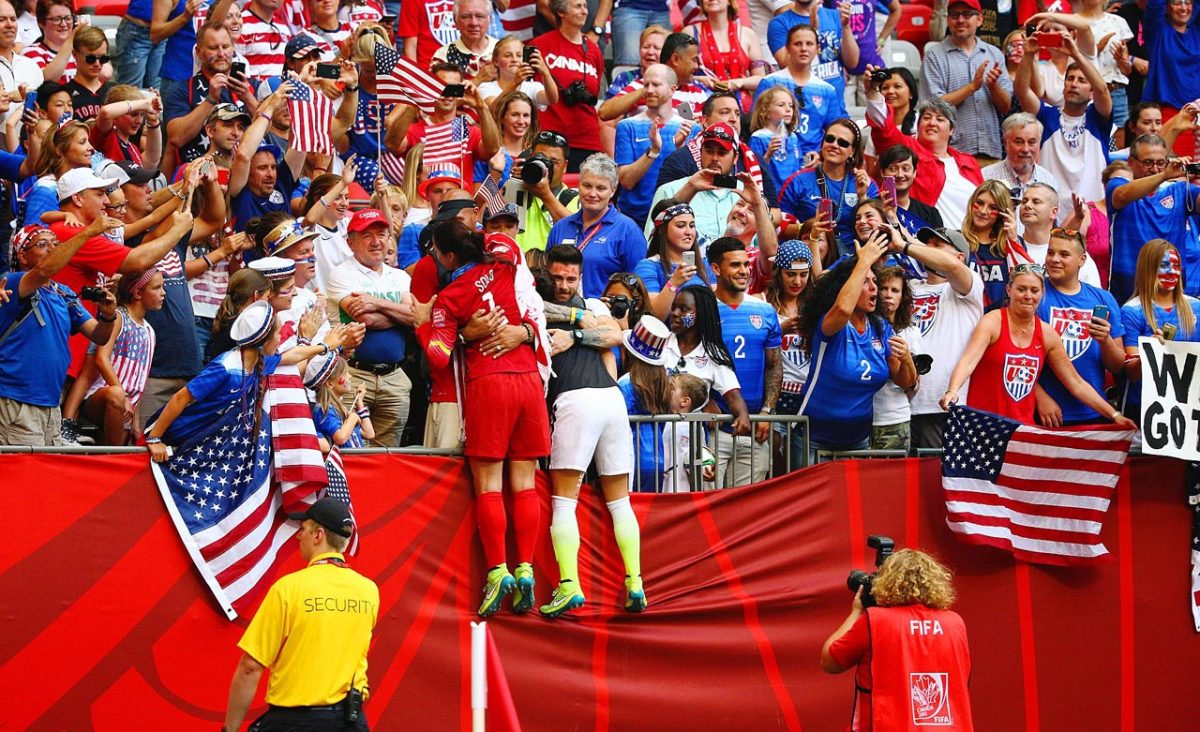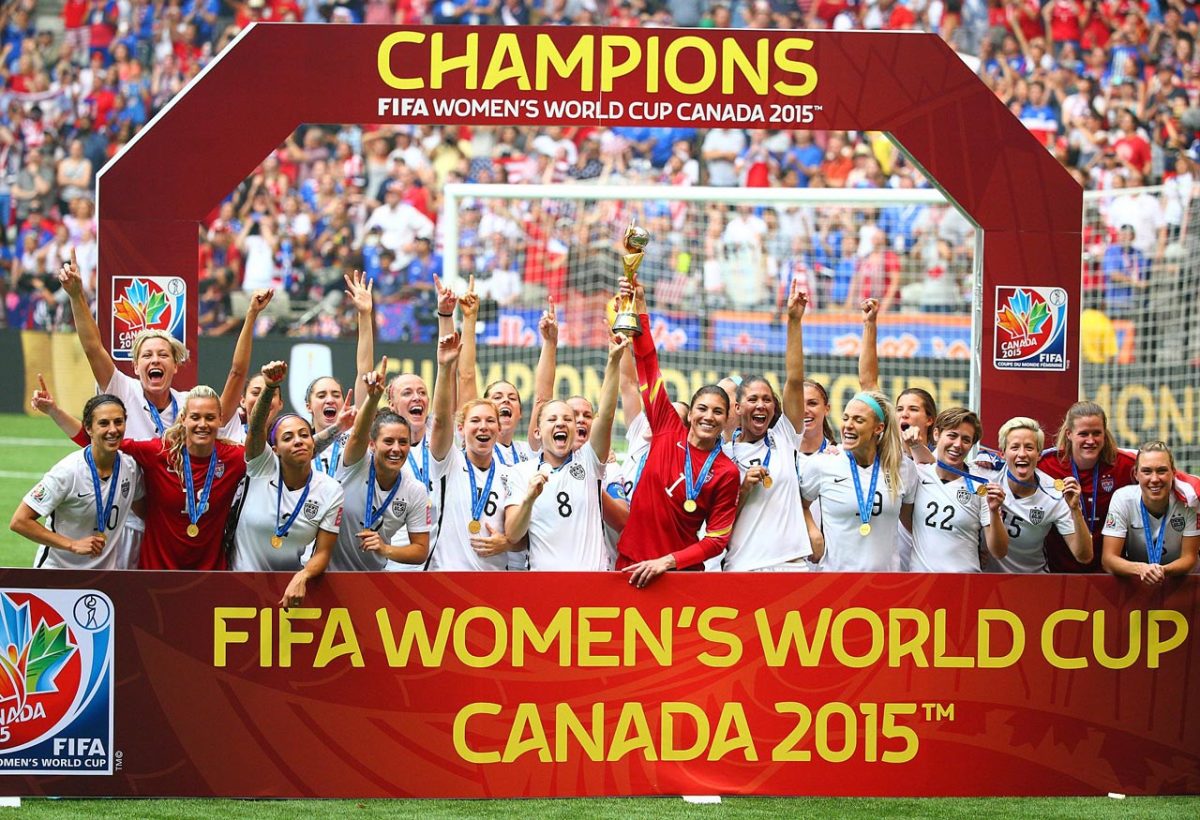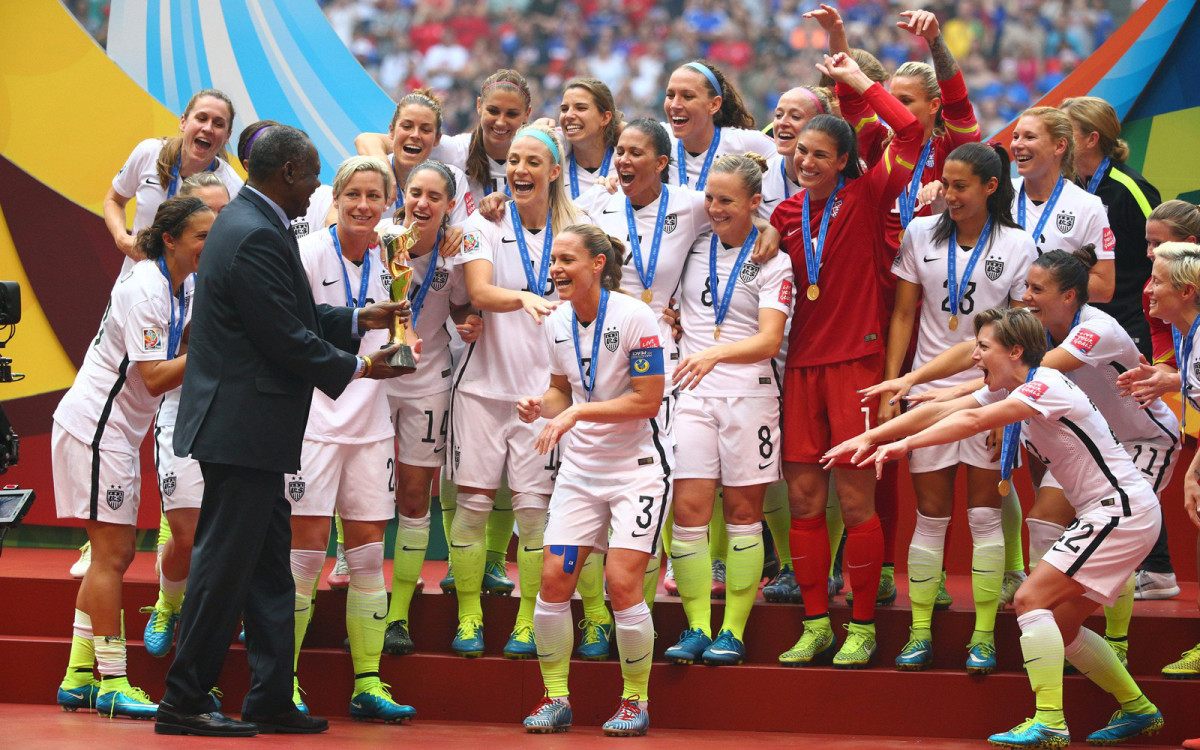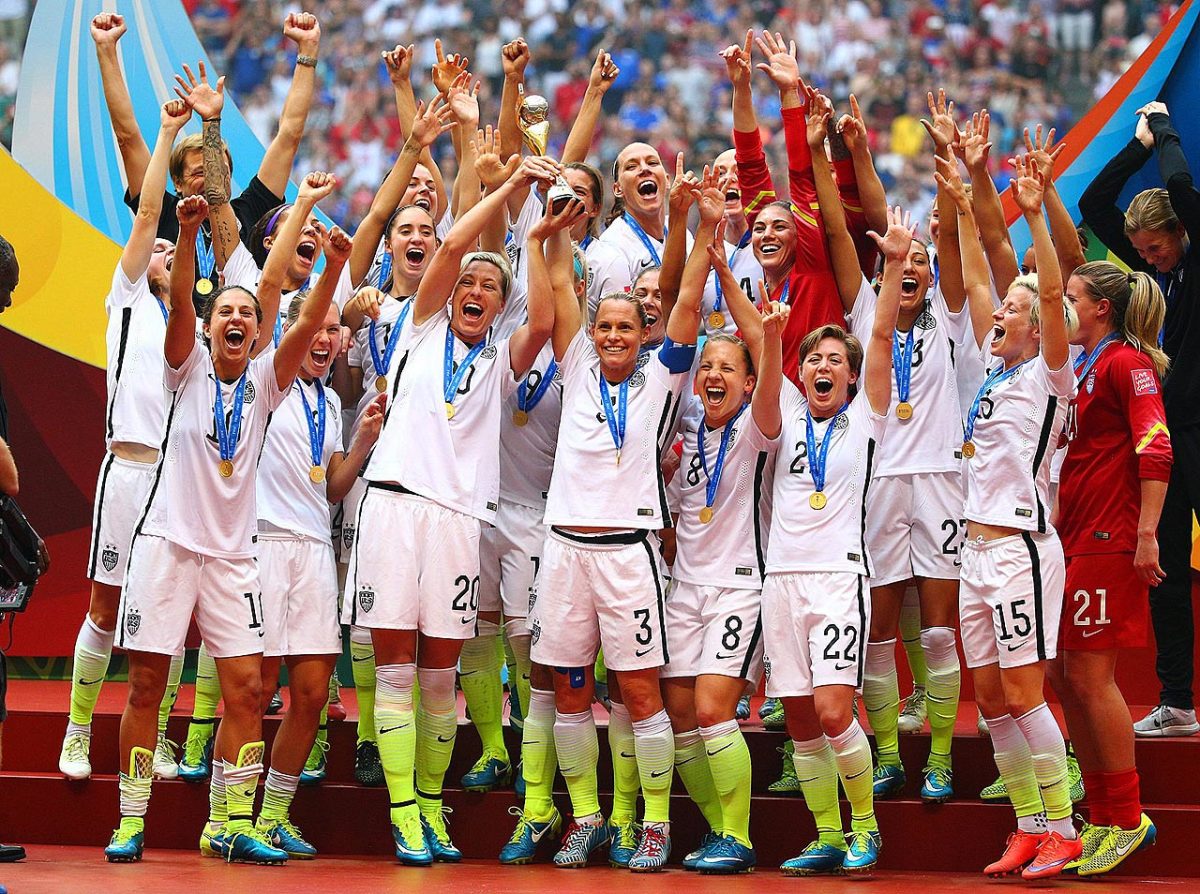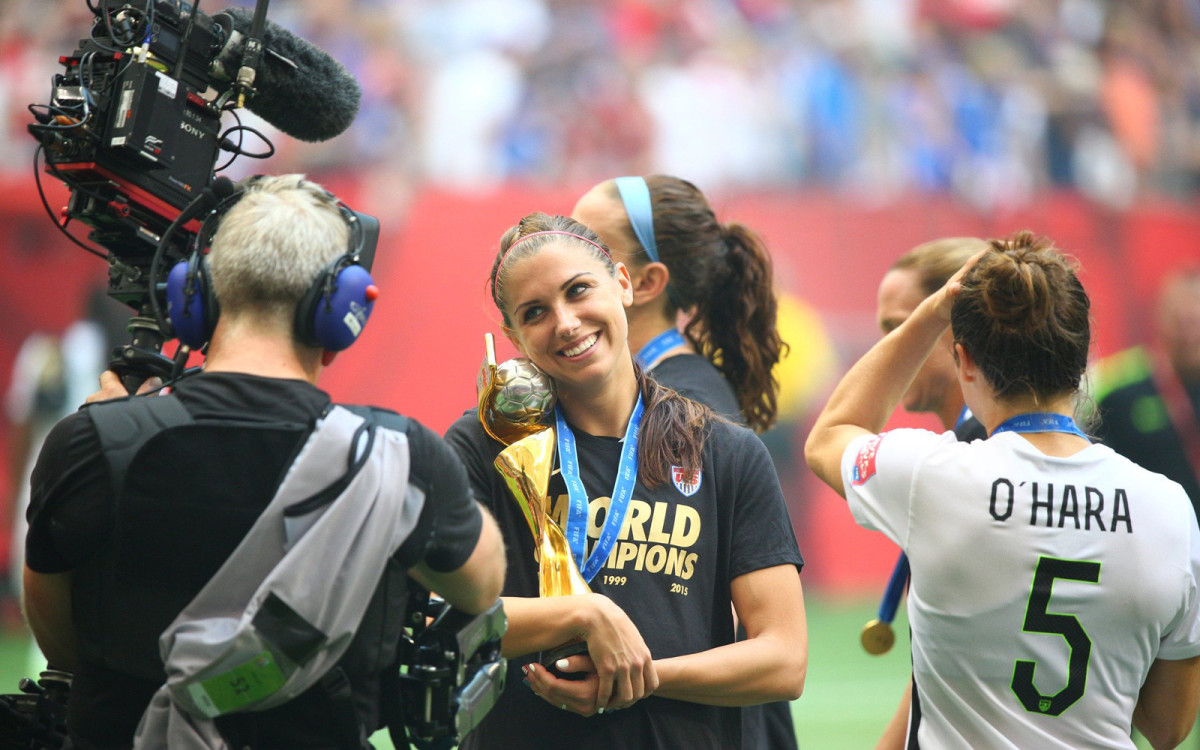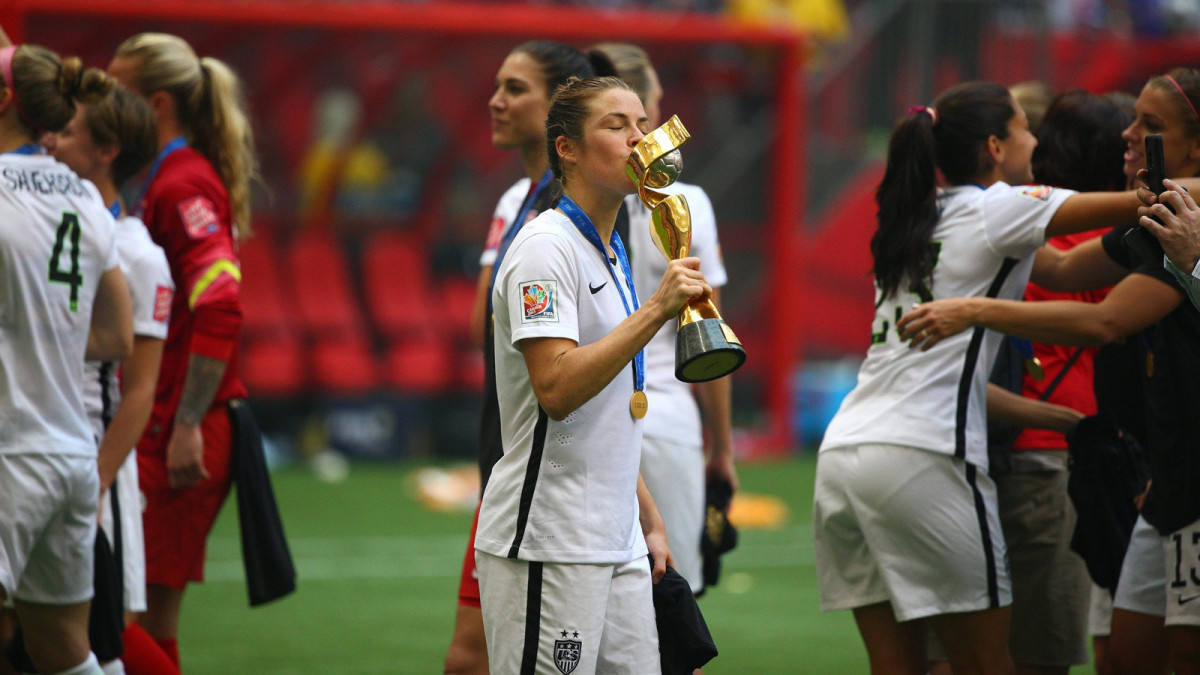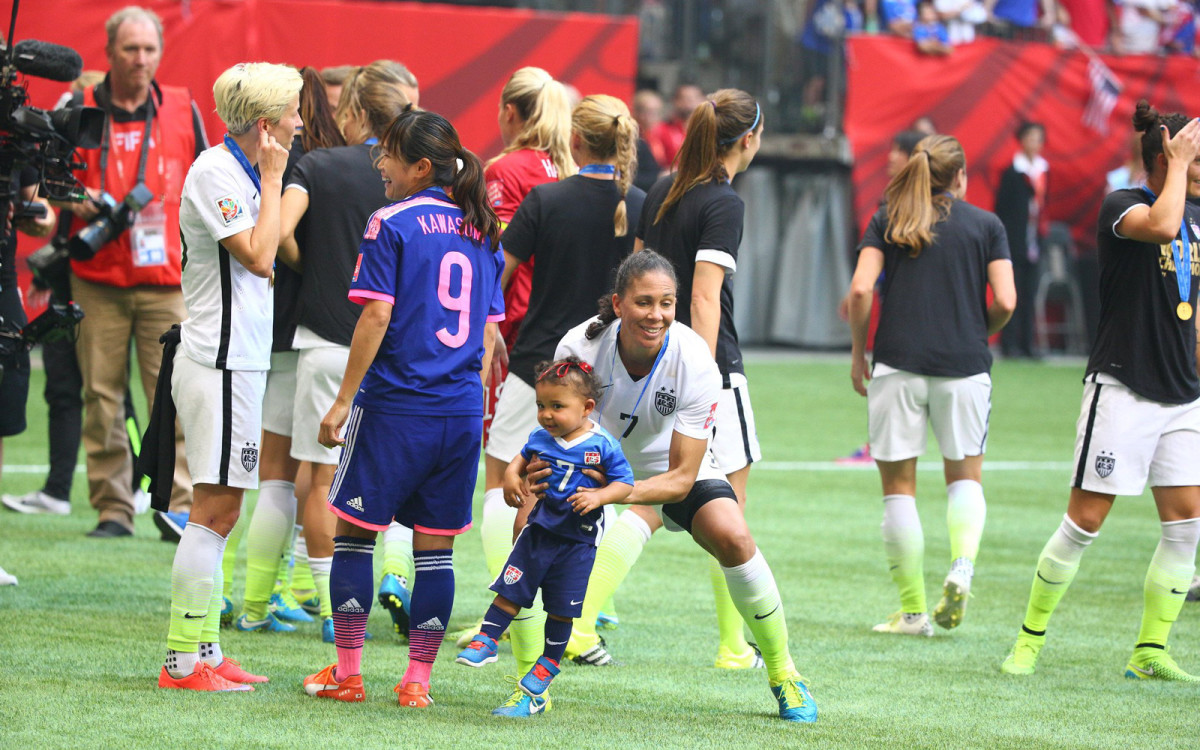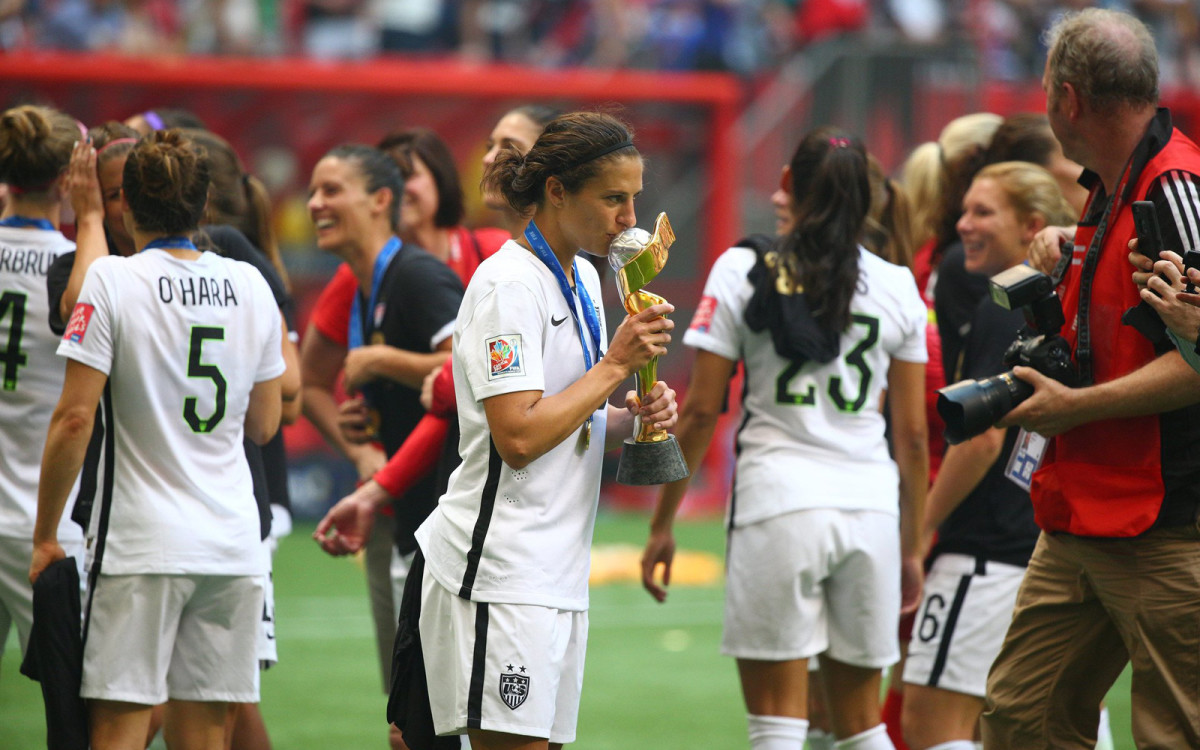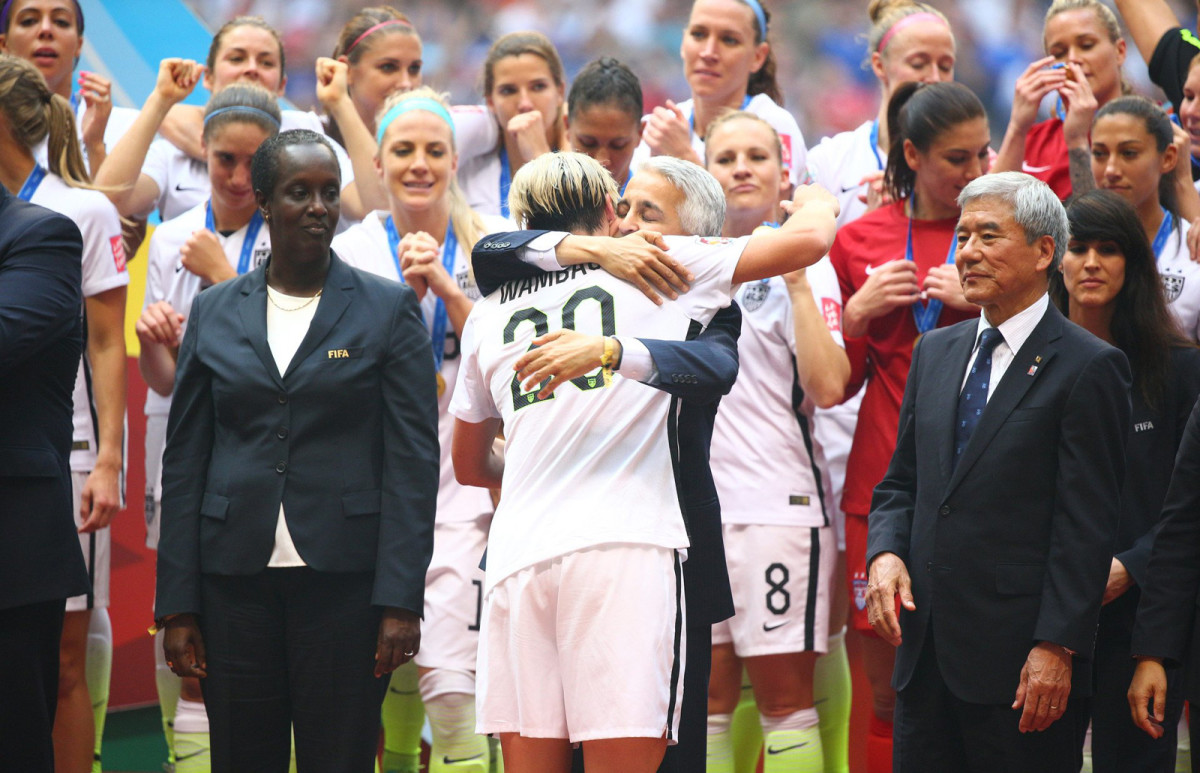Parting thoughts: A memorable final, FIFA run-in, landmark World Cup

VANCOUVER, British Columbia – The Women’s World Cup is over. After years of preparation, months of lawsuits, and the FIFA scandal, Canada hosted a wonderful tournament. Match attendance may have been a bit lower than hoped, and officiating wasn’t great, but overall, the event was quite a success. And the U.S. women’s team has returned home with the World Cup, honor with a rally in Los Angeles Tuesday followed by a ticker-tape parade in New York on Friday.
I was at BC Place on Sunday and saw the U.S. women’s team’s romp over Japan first-hand. The game was in many ways anticlimactic, over after five minutes and truly done and dusted after Carli Lloyd’s 16th-minute half-field shot completed her hat trick. Others, among them SI's Grant Wahl, have described the game much better than I can. Looking back now, a few days later, what strikes me is what a powerful moment that was, both for what happened on the pitch and what was happening beyond it.
Upfront and Onside: Dispatches on the 2015 Women's World Cup in Canada
When I arrived in Canada on June 25 I had no idea the seismic shifts that would happen back home. We (spouse and two kids, aged 10 and 8) had bought tickets to the quarterfinals and finals well in advance. And, truth be told we all had our fingers crossed for a Brazil–U.S. match on July 5. We got half of our wish on the soccer field. But little did we know that our trip would be bracketed by fantastically important events back home.
The morning after we arrived, news came in that the Supreme Court had ruled gay marriage legal. And the night before we left, another moving event, as Abby Wambach’s kiss and embrace of her wife was televised around the world—or at least to the 25 million viewers on U.S. television. It would certainly seem that a change has come to the United States.
Has it come for women’s soccer? In the United States that is a question that will be answered over the next few weeks as NWSL teams seek support after the World Cup. For women’s soccer teams around the world, the answer will come over the next couple of years. We have some preliminary responses, of course: in Mexico, not yet. Star Charlyn Corral was left off Mexico’s Pan-American squad for openly criticizing coach Leo Cuellar after El Tri Femenil’s surprisingly poor showing at the Women’s World Cup. Support for Cuellar after years of mediocrity speaks volumes about the place of the women’s game in Mexico. In Spain, we see much of the same. Despite all 23 players calling for their coach to be replaced, Ignacio Quereda remains in charge.

And of course in order to watch women’s soccer we must still deal with FIFA. We had our own experience with the institution's paranoia at the final. Before we left for the game, we made two signs (with the help of our Airbnb hosts’ daughters). One of them was my doing, I admit. It read, “Go USA! Win the Turf War!” The other was my daughter’s. Incensed at FIFA’s article on Alex Morgan that focused as much on her looks as her play, she had come up with “Hey FIFA: It’s not about being beautiful. It’s about how you play the beautiful game.”
As we walked into the stadium, FIFA representatives looked over the signs. Immediately they said that the turf sign could not go in. When we asked why, we received two very different answers. One woman said that the issue was the word “turf,” while another said the use of the word “war” was the problem.
They both, however, pointed to the word turf, which stood out in green, as they took the sign from my daughter’s hand. They took a picture of the second sign, sending it to an unseen FIFA official, before letting it through.
The decision to seize the sign makes me wonder about why FIFA fears criticism so much. Are they afraid a sign might start a revolution? Had the second sign been confiscated as well, FIFA might have ruined our day. As it was, we went into the stadium, amazed that all of our morning’s handiwork had not been confiscated. It was a good omen.
Carli Lloyd turns in Women's World Cup final performance for the ages
We had been in Vancouver for nine days and had become accustomed to seeing other Americans walking by wearing U.S. jerseys.
We attended five FIFA Fanzones, urged on by our children: there lots of games to play, a huge projection of the matches, and more free Coca-Cola products than they had seen in their lives. The zones—unlike those in Brazil—were clearly set up with younger fans in mind.
At every FIFA Fanzone that we attended—with the exception of the Japan-England game—there were more Americans than anyone else. But the day of the final had a different feel, even before we got to the stadium. It seemed that almost everyone in the city, and perhaps 95% of the pregame Fanzone crowd, was going for the United States. Pockets of Japan fans were there as well, of course, as well as a smattering of Mexico fans wearing their nation’s jersey, and the odd Colombian fan. Everyone else—of all ages, races, sexualities— were in red, white, and blue.
Inside, a smoky haze permeated the stadium, the result of forest fires outside the city, while the sky above the retracted roof was a grayish orange. Inside the air smelled somewhere between a campfire and a doughnut fryer. The combination of smoke and heat added to the already tense atmosphere in the stadium.
Lauren Holiday retires from USWNT a champion after decade of dedication
About 20 rows up, just behind the goal Japan would defend in the first half, we were surrounded by American fans: a lesbian couple from Seattle, a heterosexual couple from Portland, and another from Philadelphia. Behind us a family from somewhere in the United States, speaking Portuguese. Just to their left was a pre-teen boy with the Japanese flag on his face, and in the corner above us, the only condensed group of Japan fans.
Throughout the game they drummed and sang, even with their team down four goals.
And when those first four goals came the stadium erupted, each one met with a slightly different emotion the first, unbridled joy that released the tension; the second, still joy, but a slightly stunned one—a recognition that this was the USA's day; on the third, Lauren Holiday’s powerful volley, the screaming and hugging strangers was a recognition that the United States had won the World Cup; and the fourth, a crescendoed wave of noise as we realized that Lloyd’s audacity would in fact clear AyumiKaihori and land in the net. Even if our spirits dampened a bit after Yuki Ogimi pulled one goal back, we all watched excitedly, expectantly, waiting for the award ceremony.
- WATCH: Lloyd's hat trick | Holiday's volley | Heath's finisher
Like most of the crowd, we remained in our seats for the award ceremony, cheering and buzzing from the adrenaline rush. They had done it! Not only had the U.S. women avenged the 2011 loss to Japan, but they had done so convincingly. As an extra bonus, they had defeated Germany on the way. We were slightly disappointed that the team did not do a victory lap around the stadium, but then it seemed that FIFA discouraged it: as soon as the awards were over, the jumbotron began playing advertisements from FIFA sponsors, bombarding the stadium with enough sound that the American Outlaws' cheering was completely drowned out.
Brian's ascension settles midfield, fuels USA's run to World Cup title
The best part for me, other than watching Megan Rapinoe dance unreservedly on the stage, was this: as FIFA officials walked to the dais to give out the awards, they were roundly booed by seemingly all in attendance.
Fans were letting FIFA know the score, and putting the institution on notice: “We put up with you, FIFA, only because we have to in order to watch the game we love.”
In Vancouver, some fans held up giant portraits of U.S. Attorney General Loretta Lynch as a way of celebrating the indictments against FIFA.
This, in fact, is where the future of women’s soccer seems brightest, at least from my vantage point in Vancouver: the fans. Not only are women’s soccer fans well aware of FIFA’s shortcomings (about 30 people asked to photograph my daughter’s sign, while countless others nodded, or gave her thumbs-up and high-fives), they are incredibly knowledgeable about the game, and range in age from children to the geriatric set.
Our soccer experience in Vancouver did not end with the final whistle or the awards ceremony. The streets of Vancouver thronged with U.S. fans nodding at each other and high-fiving. Random Canadians congratulated us on the victory. And the day ended, somewhat incongruously, in a small Japanese restaurant. Why? The restaurant bar had the game on repeat. My kids, who of course had not seen enough soccer, stared unblinking into the TV while my wife and I perused the menu.
At the bar, a group of men were talking about soccer in a more-than-casual-knowledge kind of way. Suddenly, they all got up. EnowNgachu, the Cameroon women’s team coach, arrived and hugged them all. As it happens, the entire Cameroon staff was sitting across from us.
Over the course of that last dinner in Canada, we listened to the Cameroon coaches break down the U.S.-Japan game, and a couple of them came over and chatted with us. On our way out, I asked Ngachu to take a picture with my kids, and asked him his thoughts on the future of women’s soccer. Smiling, he said: “It’s in a good place, growing.”
All in all, I’d say he’s right. And it’s about time.
Joshua Nadel is author of Fútbol!: Why Soccer Matters in Latin America (2014). His work has also appeared in The Telegraph, and the Washington Post. He is currently working on a book with Brenda Elsey entitled Futbolera: The History of Women and Sports in Latin America. He teaches at North Carolina Central University in Durham, North Carolina. He can be followed on Twitter @jhnadel.
GALLERY: SI's best shots from the 2015 WWC final
USA wins Women's World Cup
